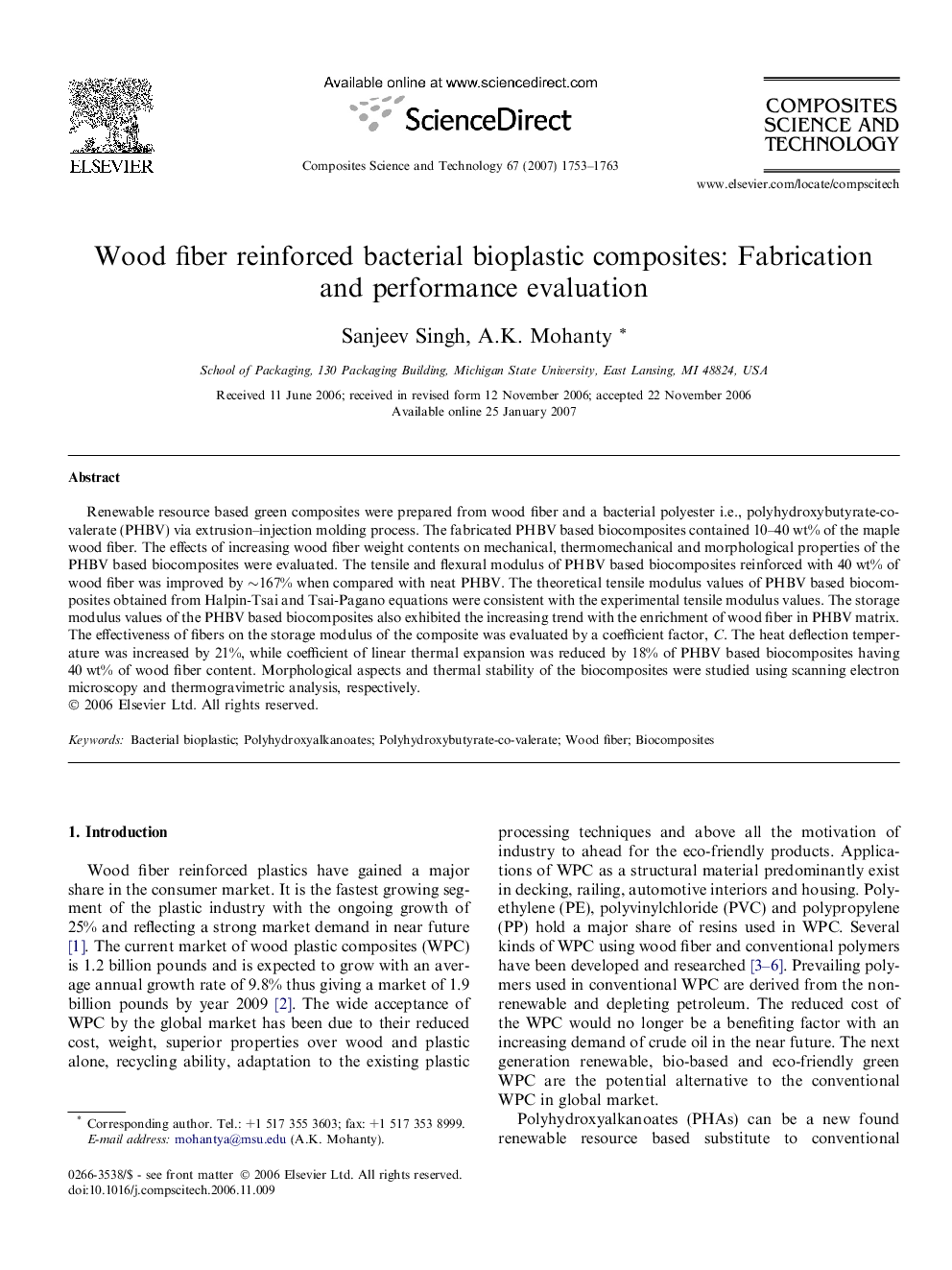| Article ID | Journal | Published Year | Pages | File Type |
|---|---|---|---|---|
| 822812 | Composites Science and Technology | 2007 | 11 Pages |
Renewable resource based green composites were prepared from wood fiber and a bacterial polyester i.e., polyhydroxybutyrate-co-valerate (PHBV) via extrusion–injection molding process. The fabricated PHBV based biocomposites contained 10–40 wt% of the maple wood fiber. The effects of increasing wood fiber weight contents on mechanical, thermomechanical and morphological properties of the PHBV based biocomposites were evaluated. The tensile and flexural modulus of PHBV based biocomposites reinforced with 40 wt% of wood fiber was improved by ∼167% when compared with neat PHBV. The theoretical tensile modulus values of PHBV based biocomposites obtained from Halpin-Tsai and Tsai-Pagano equations were consistent with the experimental tensile modulus values. The storage modulus values of the PHBV based biocomposites also exhibited the increasing trend with the enrichment of wood fiber in PHBV matrix. The effectiveness of fibers on the storage modulus of the composite was evaluated by a coefficient factor, C. The heat deflection temperature was increased by 21%, while coefficient of linear thermal expansion was reduced by 18% of PHBV based biocomposites having 40 wt% of wood fiber content. Morphological aspects and thermal stability of the biocomposites were studied using scanning electron microscopy and thermogravimetric analysis, respectively.
